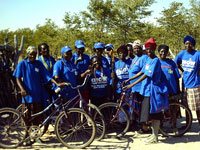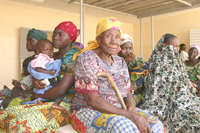 Research in many African countries
Research in many African countries
indicates higher HIV prevalence among
men who have sex with men and higher
incidence rates from male to male sexual
activity compared to the general
population.“Like many gay men in Kenya I am married,” said Peter (not his real name) a taxi driver in Nairobi who was busy ferrying partygoers to and from the third party attended by several hundred gay-identifying men and their friends to be held in the Kenyan capital in the last six months.
“We have to hide our sexuality from the rest of society. It’s not like in Europe. But I have a good life, good family, and good friends and really I cannot complain.”
Peter, who has two young children and has always lived in Nairobi, decided to work rather than attend the party held just outside the city centre: “I would have liked to be at the party but we have had fewer visitors to Kenya this year and I need the money. It is fun to be in an environment when you can relax knowing that everyone is the same. There is no way that people can be themselves like that in the bars in town”.
“Sometimes a bar does become popular with a gay crowd but then, a point will come that the bar owner will ask them not to come back because he is afraid of the law and afraid that people might think he is also gay.”
The latest party in the fledgling Nairobi scene was organized on the eve of the International Day against Homophobia. In addition to providing an opportunity for dancing and socializing it also provided space for support groups to distribute HIV prevention information and safer sex packs including condoms and lubricants to a group of men often described by public health officials as ‘hard to reach’.
The following day, the Kenya Human Rights Commission, the International Gay and Lesbian Human Rights Commission and the Gay and Lesbian Community of Kenya booked a half page advertisement in a leading national newspaper promoting the International Day against Homophobia and rights for gay and lesbian people in Kenya.
Despite signs that gay and other men who have sex with men (MSM) are better organized and more visible than ever before in both Kenya and the rest of the continent the words ‘overlooked’ and ‘sidelined’ are currently being used to describe the HIV epidemics that are thriving unchecked among men who have sex with men across sub Saharan Africa.
Research in many African countries indicates higher HIV prevalence among men who have sex with men and higher incidence rates from male to male sexual activity compared to the general population. Furthermore consistently higher levels of infection among men who have sex with men and formidable cultural, social and legal barriers, combined with high levels of stigma and discrimination and the need to address AIDS within the general population, have inhibited the provision of MSM-targeted HIV prevention, care and treatment services.
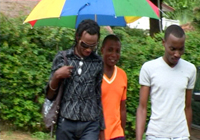 Various African research projects and
Various African research projects and
initiatives indicate that many men who
have sex with men in Africa also have
female sexual partners and do not
necessarily identify themselves as gay. In order to address this situation, the Kenya National AIDS Control Council co-hosted a meeting with the Population Council in May 2008 to bring together researchers, advocates and national AIDS programme managers from other African countries to review the status of research and evidence around HIV and men who have sex with men in Africa.
Opening the meeting Professor Miriam Were, Chairperson of the Kenya National AIDS Control Council, recognized the many social and cultural challenges involved in addressing the increased HIV risk of male to male sex and encouraged participants to face facts and develop constructive responses to address HIV among men who have sex with men.
Evidence on HIV prevalence, risk and behavior within groups of men who have sex with men was presented from several studies in Kenya and studies from Namibia, Uganda, Tanzania, Nigeria, Malawi and South Africa.
Meeting organizer and Associate with the Population Council, Scott Geibel, said: “In recent years there has been an increase of research focusing on the HIV needs of African men who have sex with men. The research is helping stimulate an increase in programmatic responses. In Kenya we particularly appreciate that the National AIDS Control Council has considered our research results and allowed it to inform their decision and policy making”.
“Through sharing lessons learned with other African National AIDS Programmes we hope to see an acceleration of targeted HIV responses for men who have sex with men in the region.”
In April 2008, the Open Society Institute in Southern Africa (OSISA), OSI’s Sexual Health and Rights Project (SHARP) and John’s Hopkins Bloomberg School of Public Health, hosted a meeting in Cape Town, South Africa, of organizations working on research and advocacy on HIV prevalence among men who have sex with men in Botswana, Namibia, Malawi and South Africa.
The OSISA/SHARP research partnership was initiated in response to the lack of funding and programmes addressing access to HIV prevention and AIDS treatment services targeting MSM despite overwhelming anecdotal evidence that MSM are a high risk community within the region.
The meeting was intended to evaluate community based studies, managed by national organizations of men who have sex with men, assessing HIV-related risk behaviors and describing the epidemiology of HIV infection among black MSM in urban sites in the four focus countries.
 “Stigma and discrimination, even among
“Stigma and discrimination, even among
AIDS programmers and policy makers,
remains a real barrier to scale-up,” said
Andy Seale, Senior Regional Adviser for
UNAIDS Regional Support Team East
and Southern Africa.In addition to revealing higher levels of HIV, other key themes emerging from the various African research projects and initiatives indicate that many men who have sex with men in Africa also have female sexual partners and do not necessarily identify themselves as gay.
In all studies, unprotected receptive anal sex was reported as highest risk for HIV transmission. Reported condom use, although often higher than sexually active heterosexuals, was often inconsistent and remains relatively low.
Andy Seale, Senior Regional Adviser for UNAIDS Regional Support Team East and Southern Africa, said: “Despite strengthening evidence that men who have sex with men are disproportionately affected within the generalized and hyper endemic HIV epidemics of Africa there is still poor targeting within national strategic AIDS plans and through programmes and services.
“Stigma and discrimination, even among AIDS programmers and policy makers, remains a real barrier to scale-up.”
Health Development Networks and SAFAIDS (the Southern Africa AIDS Information Dissemination Service) have been hosting an e-forum among AIDS practitioners in Southern Africa entitled ‘Sidelined in Prevention’ to identify barriers to scale-up.
“The discussion so far has been illuminating – during the first few weeks several postings were made anonymously by people fearful of being associated with work focused on men who have sex with men and those who feel unable to engage with the issue on religious and moral grounds,” said Seale.
The e-forum has mobilized a useful exchange between AIDS practitioners and LGBTI organizations (lesbian, gay, bisexual, transgender and intersex) with the sharing of tools, resources, strategies and approaches including to scaling up targeted prevention at a community level.
“Clearly we still have a long way to go – we need to put aside tensions between public health and rights based approaches and any personal issues around morality. All of us in the region working on AIDS should ensure that all people – regardless of their sexual preferences - are able to access the prevention, care and treatment services they need,” said Seale.



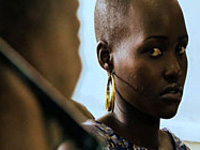



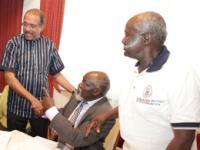

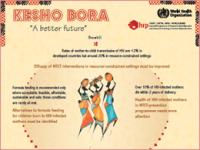

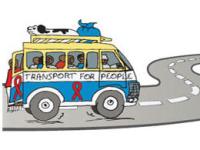 Credit: The World Bank
Credit: The World Bank Credit: The World Bank
Credit: The World Bank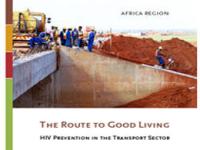 Promoting HIV prevention in the transport sector is a key component of the overall AIDS response
Promoting HIV prevention in the transport sector is a key component of the overall AIDS response 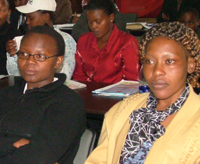
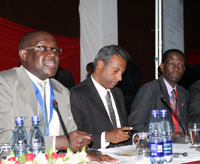
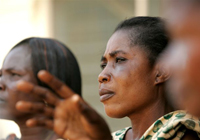
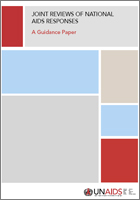 With the lessons learned from the Joint Review processes in Kenya and other countries, UNAIDS has developed a new publication entitled “Joint Reviews of National AIDS Responses: A Guidance Paper”.
With the lessons learned from the Joint Review processes in Kenya and other countries, UNAIDS has developed a new publication entitled “Joint Reviews of National AIDS Responses: A Guidance Paper”.

